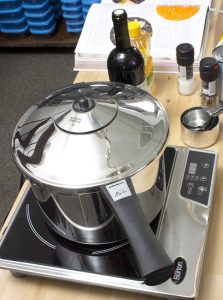You’ve finally purchased a new pressure cooker. Congratulations! You’re probably ready to take it out of the box and start cooking. However, we advise getting to know your pressure cooker better before you start cooking with it right away.
Even if it’s the same brand as your previous one, you want to fully understand how it works so you can cook your favorite pressure cooker recipes without worry of ruining them. So before you dive in and start making that pot roast or anything else, take some time to test drive your pressure cooker first.
Each Individual Pressure Cooker is Different
Whether you have an electric pressure cooker, or a stovetop one, it’s important that you learn how it works before you start cooking food with it. Even the best pressure cookers, those that are top rated and recommended by experts, should be tested before you start using it.
Why do a test run? The main reason is so that you know exactly how fast your cooker heats up and how long it takes to achieve optimum pressure. Each kind of food requires a different time to cook; not every recipe you make will take the same amount of time.
By doing a test run with your electric pressure cooker you will know how long it takes so that you can make your favorite pressure cooker recipes without any problems. If you’re using a second hand cooker then you most definitely want to do a test run.
What to Watch for When Testing Your Pressure Cooker
If you’ve never used a pressure cooker you’ll want to follow the instructions that come with it. While you’re doing a test run to make sure it works correctly, there are some common issues you might discover that we’ll explain here.
Steam escaping or loud hissing noise:
This is a problem with the gasket and seal of the pressure cooker lid.
Water droplets remaining around the jiggle top for extended lengths of time:
You should expect to see water droplets until the right amount of pressure has been reached. If you continue seeing water droplets there is an issue preventing the cooker from reaching the appropriate pressure. If your lid is not sealed completely it could cause this issue.
Simply take the lid off and then reinstall. If this doesn’t fix the problem check your vent and pressure release. They should be clean and free from any clogs that might prevent the steam from passing through.
Water leaks around the lid rim or underneath it:
This is an issue that needs to be addressed immediately. Unplug the pressure cooker and use cold water to clean the vent of your pressure cooker. The most common reason for water to leak is an issue with the gasket; cuts, cracks, etc.
If your lid doesn’t line up with the cooker perfectly and seal properly you shouldn’t use it. If you do you risk the lid bursting off of the cooker while it’s in operation.
Check Out More Pressure Cooker Reviews
These are the most obvious things that might happen when you’re testing out your electric pressure cooker that you’ll want to be on the lookout for. You could also look up your particular pressure cooker reviews here to see if others have had any problems. Pressure cookers can be a very valuable appliance for any kitchen but it’s important that it’s used correctly.

